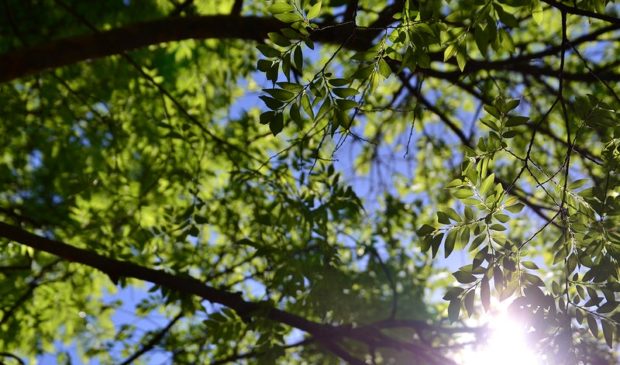Tree division seeks to make enviro manual more user-friendly
Tuesday, February 15, 2022 by
Willow Higgins The Environmental Criteria Manual, a book of rules used to help implement the city’s Land Development Code, hasn’t had a significant update in the past decade. But best practices for urban forestry have changed since then, and the manual is overdue to reflect those changes. The Community Tree Preservation Division of the Development Services Department is working to modernize the manual and make it a more helpful tool for users to comply with the city’s code. The group is bringing forward its third iteration of improvements to the manual in the past two years.
“We are really trying to make a big focus on plain language, content that is meaningful, that commissioners, the average Austinite, the end user – be it a landscape architect or a home builder – can comprehend … so that staff can do their job and ultimately trees can be better protected,” city arborist Keith Mars said.
Department staffers are proposing three types of changes to the manual, which they outlined to the Environmental Commission in a recent briefing. Some of the changes are outlined below:
1. Deleting outdated and inaccurate material:
- Removing the “significant tree criteria” from the manual. While this section of the manual was intended to assess the wellness of each tree, the section confused people, as it is never a best practice to rank trees in terms of being “significant” or not. The group feels manual users are better off without this section.
- Removing “design constraints and alternatives” from the manual. The arborists and those working to protect Austin trees aren’t responsible for coming up with solutions for design constraints. Architects and developers know how to design around trees themselves, the DSD presentation argued.
- Removing one section on “remedial tree care.” There are two redundant sections on this topic and they’re not consistent with each other, so the group proposes striking one to consolidate the material.
2. Addressing new technology, construction methods and urban forestry concerns that have arisen since 2011:
- Adding a section on methods of low-impact excavation. Supersonic air tools have become critical in the tree industry since 2011, making it possible to dig around trees without damaging roots.
- Adding rules and guidelines on how to build close to trees without damaging the critical root zone.
- Addressing certain species of trees that are OK to be removed without mitigation (which usually means planting another tree in its place). The group would like to call these trees “mitigation exempt species,” rather than “invasive,” because what is technically considered invasive is closely regulated by the state.
“This is a list of trees that for one reason or another our urban forest is better off if we prioritize removing them,” said Daniel Priest of the tree division.
The department would like to add the Arizona ash tree to this list of trees. “They’ve got a real bad reputation,” Priest said. Many of these trees are already in unhealthy or dangerous condition from last year’s winter storm. They will also likely be killed by an invasive beetle that is projected to be coming to town in the next several years, which can become a public health concern. It’s better to safely remove them, Priest said.
3. Reorganizing and rewriting existing content in the manual to better align with the code:
- These changes mostly make the rule book easier to read and navigate and improve writing style and spelling.
- They’re also proposing additional ways to incentivize the preservation of stands of native trees, adding qualifying criteria for mitigation alternatives (like paying into the urban forest replenishment fund) and adding a mitigation diversity requirement so that replacement trees planted diversify the urban forest.
The Environmental Commission took note of the changes and raised questions about the city’s tree preservation policy and the process of changing the rules.
“I’m really curious about why the rewrite of the Environmental Criteria Manual is being done by the Development Services Department,” Commissioner Pam Thompson wanted to know.
“The Community Tree Preservation Division has long been in Development Services … the city has many offices in different departments,” explained Katie Coyne of the Watershed Protection Department. “My role as an environmental officer is to make sure that work is coordinated, but Development Services is a good partner in doing that work and that is where that division has been for years and years and years.”
The division is asking for public feedback on the proposed changes through the end of February. They’re hoping to submit final suggestions to the city’s rules manager by March 3, and the adoption process would theoretically happen in late summer.
The Austin Monitor’s work is made possible by donations from the community. Though our reporting covers donors from time to time, we are careful to keep business and editorial efforts separate while maintaining transparency. A complete list of donors is available here, and our code of ethics is explained here.
You're a community leader
And we’re honored you look to us for serious, in-depth news. You know a strong community needs local and dedicated watchdog reporting. We’re here for you and that won’t change. Now will you take the powerful next step and support our nonprofit news organization?











